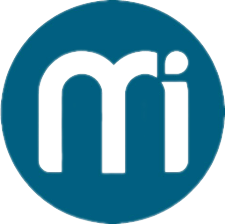The Role of a Plagiarism Checker in Modern Writing

Introduction
Writing uniqueness is more crucial than ever in the current digital age, because material is easily accessible at the touch of a button. Content is continuously produced by writers, students, researchers, and professionals; the difficulty is in making sure that their work is genuinely original. A plagiarism checker comes in quite handy in this situation. It helps identify similarities between a piece of writing and existing online content, ensuring that writers maintain integrity, credibility, and authenticity in their work.This article explores the importance of a plagiarism checker, its benefits, how it works, and why every writer should use it.
What is a Plagiarism Checker?
A plagiarism checker is a digital tool designed to detect similarities between written text and content that already exists on the internet or in academic databases. By scanning billions of sources, including websites, journals, and research papers, these tools highlight areas where the writing may match previously published material.Rather than manually searching for similarities, which is nearly impossible, a plagiarism checker automates the process within seconds, giving writers peace of mind and allowing them to refine their work before submission or publication.
Why Plagiarism is a Serious Concern
Plagiarism is not simply copying words—it is the act of presenting someone else’s ideas, phrases, or research as one’s own. It raises ethical, professional, and legal concerns. Students may face academic penalties, professionals may lose credibility, and businesses could damage their reputation if found guilty of plagiarism.
Some key consequences of plagiarism include:
-
Academic penalties – Students can be suspended or expelled for repeated plagiarism.
-
Professional damage – Writers and researchers can lose trust from readers or peers.
-
Legal issues – Copyright infringement may lead to lawsuits and fines.
-
Loss of originality – Content without uniqueness fails to add value to readers.
This is why the role of a plagiarism checker cannot be underestimated in today’s knowledge-driven society.
How a Plagiarism Checker Works
The way a plagiarism detector works is by comparing a paper to large content databases.Here’s a simplified breakdown of the process:
-
Text Scanning – The tool reads and analyzes the submitted document.
-
Database Comparison – It compares the content with published websites, academic papers, books, and online repositories.
-
Similarity Detection – It highlights exact matches or paraphrased sentences that resemble other works.
-
Report Generation – A percentage of similarity is provided, along with links to original sources.
This process helps users identify unintentional plagiarism and correct it before final submission.
Benefits of Using a Plagiarism Checker
The advantages of using a plagiarism checker are numerous, especially for writers, students, and businesses. Below are some of the most significant benefits:
Ensures Originality
The most obvious advantage is that it guarantees originality. A plagiarism detector guarantees that your work is distinct and does not duplicate previously published material.
Saves Time
Instead of manually checking multiple sources, the tool does the heavy lifting in seconds. This efficiency allows writers to focus on improving quality rather than worrying about copied content.
Boosts Credibility
When content is free from plagiarism, readers and audiences are more likely to trust the writer. This credibility is essential for researchers, journalists, and content creators.
Protects from Legal Issues
Copyright violations can lead to legal consequences. By using a plagiarism checker, writers reduce the risk of unintentionally copying copyrighted material.
Improves Writing Skills
Writers can see where they rely too heavily on existing sources and learn to express ideas in their own words, ultimately enhancing their writing abilities.
See more article: plagiatsprüfer
Types of Plagiarism Detected by a Plagiarism Checker
Plagiarism is not always intentional. A plagiarism checker helps detect multiple forms of plagiarism, such as:
-
Copying text verbatim is known as direct plagiarism.
-
Rewording sentences without giving due credit is known as paraphrasing plagiarism.
-
Reusing one's own previously published work is known as self-plagiarism.
-
Mosaic plagiarism is the practice of fusing original writing with sentences that have been copied.
-
Inadvertently neglecting to properly credit sources is known as accidental plagiarism.
By identifying these variations, a plagiarism checker provides comprehensive protection against all forms of copied work.
Who Needs a Plagiarism Checker?
A plagiarism checker is not limited to academic use; it is valuable for a wide range of individuals and industries.
-
Students and Researchers – To ensure assignments, theses, and research papers are original.
-
Teachers and Professors – To check for academic honesty in student submissions.
-
Bloggers and Content Writers – To publish unique articles that improve SEO ranking.
-
Businesses and Corporations – To ensure marketing content and reports are authentic.
-
Authors and Journalists – To maintain credibility and avoid accusations of idea theft.
In summary, utilizing a plagiarism checker can be advantageous for anyone who produces written content.
Choosing the Right Plagiarism Checker
Not all plagiarism checkers are equal. When selecting the right one, several factors should be considered:
-
Database Size – Larger databases mean more accurate results.
-
Speed and Efficiency – The tool should generate reports quickly.
-
Accuracy – False positives or missed plagiarism reduce the tool’s reliability.
-
User Interface – The user experience is enhanced with a straightforward and intuitive UI.
-
Cost – Some plagiarism checkers are free, while others offer premium features.
Popular options like Turnitin, Grammarly, and Copyscape are widely trusted, but newer tools also provide reliable results for different needs.
The Role of a Plagiarism Checker in SEO
For digital marketers and content creators, originality is not just about ethics—it also impacts search engine rankings.Duplicate material is penalized by search engines like Google, which reduces a website's exposure. Using a plagiarism checker helps ensure that articles, blogs, and product descriptions are unique, improving search engine optimization (SEO).Unique content attracts organic traffic, boosts brand reputation, and provides more value to readers, making a plagiarism checker an essential tool for online success.
Best Practices to Avoid Plagiarism
While a plagiarism checker is essential, writers should also adopt good habits to minimize plagiarism risks. Some best practices include:
-
Cite Sources Properly – Always give credit to original authors.
-
Paraphrase Effectively – Use your own words rather than just rearranging sentences.
-
Keep Track of References – Maintain notes of all sources used in research.
-
Develop Original Ideas – Add personal insights and analysis to content.
-
Use a Plagiarism Checker Before Submission – Final verification ensures originality.
Conclusion
Originality in writing is not just a standard—it is a responsibility. Whether you are a student submitting an assignment, a researcher publishing a paper, or a blogger creating online content, maintaining authenticity is essential. A plagiarism checker provides a simple yet powerful solution to protect writers from the pitfalls of plagiarism.By ensuring uniqueness, saving time, improving credibility, and safeguarding against legal issues, these tools have become indispensable in the modern writing landscape. When paired with good writing practices, a plagiarism checker ensures that every piece of content remains authentic, valuable, and trustworthy.
For more and latest article: Click Here
- Art
- Causes
- Crafts
- Dance
- Drinks
- Film
- Fitness
- Food
- Games
- Gardening
- Health
- Home
- Literature
- Music
- Networking
- Other
- Party
- Religion
- Shopping
- Sports
- Theater
- Wellness


